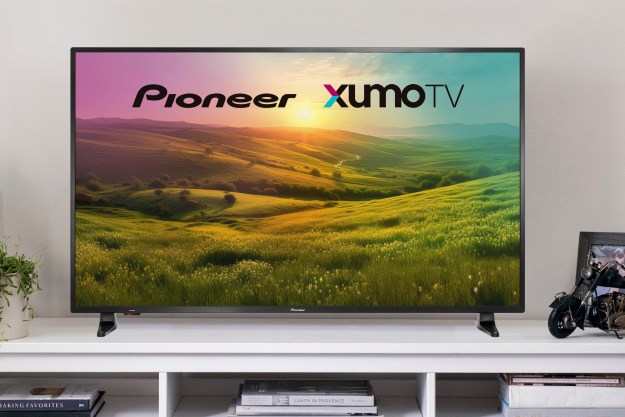Buying a new TV can be quite an ordeal. There’s figuring out what size is best for your living space, then there’s choosing what picture tech you should go with, then there’s the overall price, and then there’s all the bells and whistles you need to think about, like which smart TV platform to trust and what TVs will let you cast photos and videos from your phone or tablet. Yeah, you’ve definitely got your work cut out for you, but it’s actually a good thing to have all these options. Of course, it doesn’t hurt to have a little guidance, too.
We’ve already covered what the best TVs are, but if you’d like some bigger-picture TV intel that you can carry around with you, we thought it best to put together this guide to the best TV brands. While this isn’t an end-all-be-all resource, we’ve definitely vetted and tested enough TVs to know what brands are worth considering, as well as which are best to avoid. We’ve also made sure to highlight the calling card features and specifications of these noteworthy names.
And if, when you’re done, you’re ready to narrow down your search, check out our other roundups, including the best TVs under $500, or the best TVs under $1,000. If you’ve dug even deeper and have an OS preference, we’ve got lists of the best Google TVs and the best Roku TVs, too.
The best TV brands at a glance
| Brand | Category | Calling cards | Operating systems |
| Samsung | Heavyweight | QLED, QD-OLED | Tizen |
| LG | Heavyweight | OLED | webOS |
| Sony | Heavyweight | Cognitive Processor XR chip | Google TV |
| TCL | Contender | Value | Google TV, Roku TV |
| Hisense | Contender | Variety | Google TV, Android, TV, Roku TV, Fire TV, Vidaa TV, XClass TV |
| Vizio | Contender | Quantum | SmartCast |
| Roku-made TVs | Newcomer | Budget, value | Roku TV |
Note: Televisions chosen for this list are representative of makes and models available in the U.S. market. Further, TVs included in this guide were chosen primarily for their picture performance, with other considerations such as operating system or audio performance as secondary considerations.
Samsung
South Korea’s Samsung is the de facto market leader in the world television space, and took the top spot again last year, leading competitors like LG and Sony by a wide margin in terms of overall sales. That’s partly a result of the company’s size (Samsung ranks 25th on the Fortune 500), but mostly it’s because Samsung makes great TVs with a focus on accessibility.
Operating system: Tizen
Tizen is Samsung’s own Linux-based smart TV OS that places all your apps in a row along the bottom of the Smart Hub (read: home screen). It’s got all the popular streaming apps as part of a 2,000-plus app library, and it has a neat feature that activates when you select an app, showing you popular sub-categories (like Netflix shows or Spotify playlists) for that app. There’s also a Tizen Gaming Hub which supports Xbox, and GeForce Now for streaming games.
Perhaps most impressive is how Tizen works with the Samsung app family, including SmartThings, Smart Connect, and Smart View. You can use those to mirror content from your phone — even iPhones — to your TV or send TV playback directly to your phone (only on Samsung phones). If you’ve got compatible smart home devices, you also can use the TV as a control hub.
Also, many Samsung TVs offer other cool features like importing app logins from your phone to save time, and the Samsung One Connect Box, built to simplify messy cable nests behind TVs (and to enable cleaner wall-mounting).
Calling cards: QLED, QD-OLED, and Neo QLED
Samsung produces three main types of TVs: QLEDs, QD-OLEDs, and Neo QLEDs. Samsung’s regular QLED models are LED TVs with a layer of quantum dots positioned in front of the backlight. QD-OLEDs actually combine the best of both QLED and OLED technology (more on that below). Samsung Neo QLEDs use the same display tech as the brand’s QLED models but adds mini-LED lighting into the mix. Mini LEDs are much smaller than regular LEDs, which allows these types of TVs to produce a brighter picture with enhanced colors and contrast.
Best for bright rooms
In practice, QLED televisions have been known to be brighter (better for bright rooms) than less-expensive LCD TVs, and unlike OLED, can be more affordably built into large displays (100 inches and beyond).
However, over the last couple of years, Samsung has been producing its own line of OLED TVs. These are billed as “QD-OLED” models because these sets actually combine the self-emissive display tech of traditional OLEDs with the quantum dot-infused backlighting of an LED. As it stands, Samsung has produced two QD-OLED models: the 2023 S95C and the 2022 S95B.
LG

Another South Korean company, LG may not be as massive as Samsung, but thanks to its OLED TV display technology, it’s had minimal competition when it comes to top-of-the-line picture performance with its unrivaled contrast and black levels, but new screen tech like QD-OLED is making headway.
Operating system: webOS
webOS is LG’s easy-to-use user interface and, like Tizen, Roku, and Google TV, is the hub from which you access your apps, TV settings, and other advanced features. The most recent version of webOS has been redesigned to offer more customization and shortcuts so users can get to what they want to watch faster.
LG’s Magic Motion Remote is also one of the better-designed remotes, with support for voice commands for both Amazon Alexa and Google Assistant, along with a Magic Explorer feature that lets viewers get additional info about the show or movie they’re watching, from what actors appear in the series or film to notable trivia.
Calling card: OLED
OLED — Organic Light Emitting Diode — is still considered the premier display technology today, but it does have stiffer competition than ever. OLED TV panels are capable of reaching black levels never before seen, with better contrast across the board, and because the individual pixels themselves light up, OLED televisions boast quicker response times (and less input lag) than other types of displays, and the picture integrity is stunning at any viewing angle.
We’re always impressed by the TVs that LG continues to roll out year after year. For 2023, the brand’s OLED flagship was the amazing G3 Series OLED. One of the biggest hitches with an OLED screen is the relative lack of brightness when compared to LED-lit models. Fortunately, LG knows the world wants brighter screens, and the company’s Evo panel delivers some of the brightest picture we’ve ever seen on a traditional OLED.
We were also stunned by the LG Wireless M Series, an OLED that ditches TV-based inputs in favor of an infrared media hub that you plug all your streaming devices and game consoles into. Think of it like the Samsung One Connect Box, but no wires whatsoever (except for a power cable).
We’ve run down the pricing and availability details for all of LG’s 2023 models for you as well.
Sony
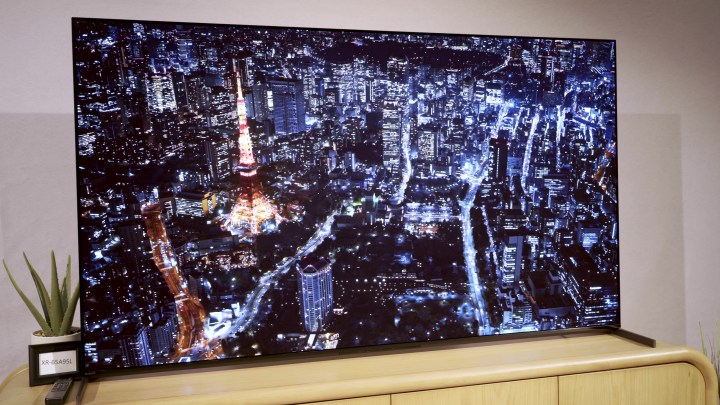
It’s easy to get lost in the Samsung versus LG TV wars and not think as much about Sony, but you’d be making a big mistake. While its TVs tend to be a bit more expensive, they’ve got some of the best processing capabilities and accurate color reproduction of them all, especially if you care about things like super-smooth motion and optimized Playstation 5 performance.
Operating system: Google TV
Google TV — versions of which run on many other devices, like the Amazon Fire TV family — isn’t quite as slick as webOS, but it’s arguably more powerful. Unlike webOS and Tizen, the Google TV home screen is laden with apps and suggestions, and you can scroll down for even more. Sony’s 2021 catalog was the first generation of sets to switch over to Google TV, an overhaul of the Android TV OS that features a faster, more intuitive user interface, complete with recommended and sponsored web content.
Google TV also has built-in support for Google Assistant (via a microphone in the remote or in your phone) and Chromecast, for both video and audio. Plus, as with Tizen, Google Smart Lock can automatically sync logins from your mobile device to your TV. You also have the ability to create separate profiles with Google TV for each person in your home.
Calling card: XR chip, mini-LED, and QD-OLED
Sony is one of a handful of companies offering OLED televisions (the list has recently expanded to include Panasonic, Philips, Hisense, and Vizio) thanks to a deal with LG Display allowing Sony to build TVs using LG OLED panels, which can be found in Sony’s excellent 2023 A80L OLED.
Thanks to Sony’s Cognitive Processor XR chip, Sony’s Bravia flagship TVs offer greater contrast, improved sound, low input lag and faster web performance than we’ve ever seen. In 2023, Sony updated the XR chip with something called XR Clear Image that will appear in select TVS. Sony says that the update will improve noise reduction and reduce motion blur. Many of Sony’s TVs also offer VRR (Variable Refresh Rate) for gaming, particularly with the Sony-owned PlayStation 5.
In 2022, Sony also announced a push into mini-LED technology. It’s a more affordable version of MicroLED tech where the LEDs are a bit larger, but still provide some of the same benefits, including better-localized dimming, brightness and contrast. Sony’s processor is key to this as it is designed with backlight algorithms to take the most advantage of smaller LEDs. For 2023 Sony’s mini-LED has got even better with an all-new tier, the brighter X95L 4K sets (that should rival Samsung’s QN90C QLED) models and its new X93L.
But the most interesting battleground is with QD-OLED. Last year Sony caused a stir by releasing its first QD-OLED TV, the stunning Bravia A95K, which is built using Samsung Display’s QD-OLED panel. Sony clearly sees a future in QD-OLED as it marries the best properties of OLED’s lush, perfect blacks and QLED’s brightness abilities. For 2023, Sony doubled down with its next generation of QD-OLED, the A95L (that replaces the A95K), which uses Samsung’s brighter, more efficient QD-OLED panel. The A95L should be a contender for TV of the year.
TCL

TCL was barely a blip on the radars of seasoned LED TV reviewers half a decade ago. Today, it’s one of the fastest-growing brands out there and has been offering us some of the best mini-LED QLED TVs on the market at preposterously low prices.
Operating system: Roku, Google TV
TCL isn’t the only company making Roku TVs — Sharp, Philips, and Hisense do the same, among other manufacturers — but it has been the most successful so far. The Roku TV platform’s vast selection (4000+) of apps and its snappy cross-app search function are second to none and the OS is super easy to use. But if Roku isn’t your jam, TCL expanded into Google TV territory in 2021 and hasn’t looked back. There were even some rumors that the company would be ditching Roku, but they assured us that this isn’t the case.
Calling cards: Value, mini-LED QLED
If you’re on a tight budget, but still want some buttery mini-LED QLED goodness in your TV with stunning picture quality that can actually go toe-to-toe with some of the higher-end Samsung and LG TVs, TCL is the way to go.
The big guns for 2023 were TCL’s flagship QM8 Series, a mini-LED QLED lineup that will come in 65-, 75-, 85-, and, (gulp) 95-inch varietals. It’s hard to find any TV that can achieve the peak brightness and hard-hitting HDR performance that the QM8 delivers without a hitch, which is why we think this new TCL flagship is going to garner some big praise when it comes to TV of the Year laurels. Along with the Q7 Series (one rung below the QM8) and Q6 models (one rung below the Q7), TCL’s other lineup is the S Series. Think of these as your more traditional budget-buy models, but with picture tech that still brings the big brightness and colors.
Hisense
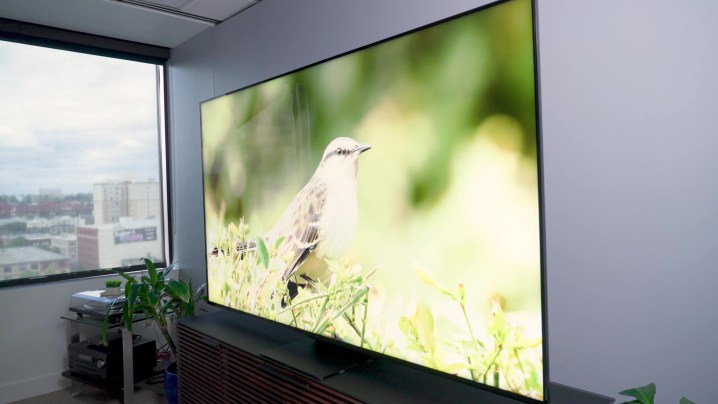
Chinese manufacturer Hisense has been steadily making moves in the TV market over the years, licensing Sharp’s brand name (and buying its North American factory outright in 2015), buying Toshiba’s business in 2017, and making TVs under all three names for the U.S. market. Hisense had a rocky start but found a rhythm in making value-conscious Quantum 4K panels. In fact, their quality has improved so much that one of the latest versions, the 65-inch Hisense U8K, is on our list of the best TVs for its amazingly bright image and class-leading black levels.
Operating systems: Roku, Google TV, Android TV, Fire TV, Vidaa TV, XClass TV
Hisense is unique in that it doesn’t have a singular operating system tied to its line of televisions. Some of its TVs still use Android TV, and Hisense also sells models with Google TV, Roku TV, and Fire TV, for Alexa lovers. It also offers TVs that use an OS called Vidaa TV, a slick-looking software that’s good for local TV, and XClass TV, which is simple and bare-bones.
Calling card: Variety, mini-LED QLED
With all of those OS choices, buyers can pick the smart platform they like, with plenty of options for budget-friendly purchases. And like TCL, Hisense uses mini-LED QLED (Hisense calls it ULED) technology for its best TVs, including the above-mentioned 2023 U8K Google TV which has excellent contrast and vivid color, that comes close to many of the best models from Samsung, Sony, and LG. Hisense’s step-down models include the U7K and U6K series, both of which deliver an exceptional picture and other great features, but at a slightly reduced cost (when compared to the U8K).
Lastly, new for 2023, is a new flagship Hisense, the 85-inch ULED X, a mini-LED QLED monster with more than 5,000 local dimming zones and a peak brightness of 2,500 nits. Dolby Vision, Wi-Fi 6e, NextGen TV, and AMD’s Freesync Premium Pro are some of the other features that are helping push Hisense forward this year, too. Like TCL and Vizio, Hisense’s TVs are priced to afford, making you sometimes wonder why you’d even pay more for the big players.
Vizio
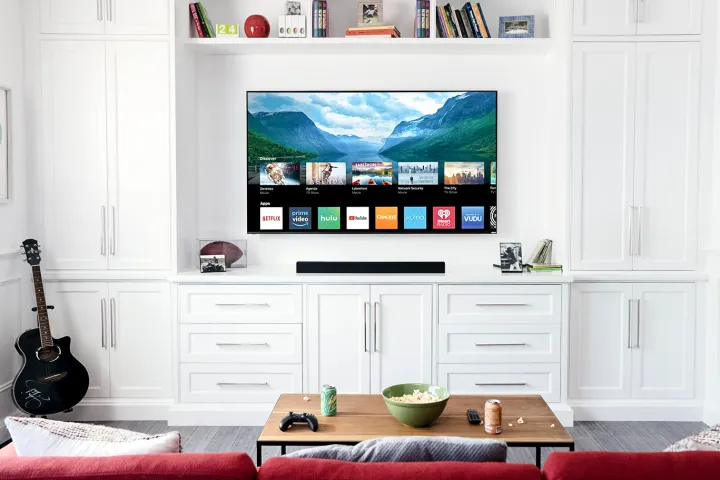
Vizio was once the undisputed champion when it came to awesome picture quality at a reasonable price. And while brands like TCL and Hisense have since challenged the brand’s position at the top of Budget TV Mountain, this isn’t to say that Vizio isn’t still a name to be reckoned with.
Operating system: SmartCast
Before 2017, all of Vizio’s Smart TVs ran a system that required users to download an application on their smartphone or tablet, which would be used to cast any content to the screen. SmartCast updated that system by automatically curating a wide selection of apps without the need to download anything. That includes major streamers from Disney+ to Netflix, plenty of individual channel apps and a wide variety of niche content. It’s particularly easy to use in a field where smart TV platforms aren’t always the most user-friendly.
Vizio also now offers a WatchFree+ service, which allows users to watch free content on SmartCast from partners like Disney, Lionsgate, Sony, MGM and others.
Calling card: Affordability, Quantum color
As with Samsung, Vizio is big on quantum dot-enhanced panels. This is especially evident for models like the Vizio MQX and P-Series Quantum X. While this are both 2022 sets, we’re still thoroughly impressed by the type of picture these bad boys deliver. But if you need the latest and greatest tech from your TV brand (we don’t blame you), look to Vizio’s Quantum Pro 4K QLED. This 2023 flagship pushes 4K at up to 120Hz across all inputs, as well as 1080p at 240Hz. That’s on top of Wi-Fi 6E Tri-Band support and solid HDR support. It may not be the best top model on the market, but its price is pretty unbeatable.
Vizio also has an M-Series TV specifically designed for gaming, with a 240 fps frame rate and built-in Dolby Vision Auto Gaming, among other features.
Roku TV
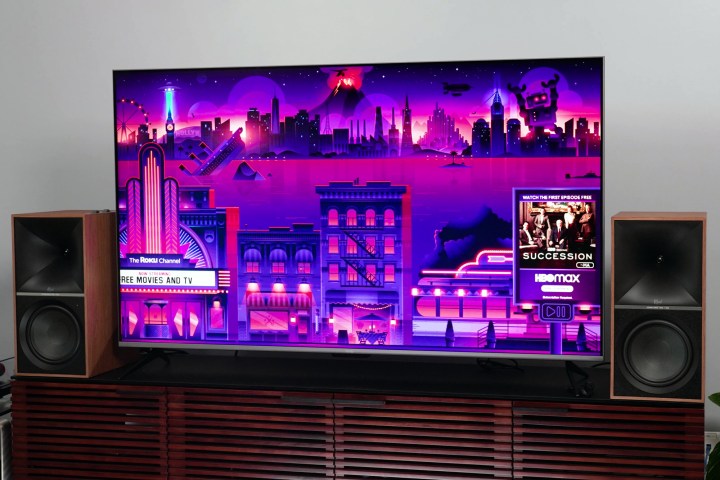
A new addition to our list, but certainly no stranger to the TV landscape with its set-top boxes and sticks, the world’s most popular streaming platform this year began manufacturing its own TVs under the Roku TV brand name with its first sets hitting the market in March. While the Roku Smart TV OS has been widely available for years in TVs made by Hisense, TCL, and others, this marks Roku’s first foray into making its own TV hardware, a move that could boom or bust. Roku has come out of the gate swinging with a few tiers of televisions that range in price from $120 HD (720p) sets to $1,000 4K QLED models that we’ll get into more about below.
Operating system: Roku OS
If you’re already familiar with the Roku OS, you know that the popular interface is easy to use, looks good (although, it could use an update), gives you access to a massive library of apps and channels, and all the streaming services you know and love — including its own Roku Channel. Just like TCL and Hisense TVs that carry it, the Roku operating system is baked right in, making setup super simple. Roku’s TVs, however, come with Roku’s own familiar voice remotes.
Calling card: Value for the price, Roku-built
Roku is clearly aiming for the budget-to-value end of the TV market, with a lineup of TVs to suit. At the top end of their spectrum is the flagship Plus Series, a range of 4K QLED TVs with Dolby Vision and HDR10+ picture, Dolby Atmos sound, and Roku’s top-of-the-line Voice Remote Pro. The Plus Series comes in 55-, 65-, and 75-inch models that currently retail for $500, $650, and $1,000, respectively, which already puts them at a lower price point than comparable TCL and Hisense models, so it will be interesting to see how this affects Roku’s relationship with those manufacturers. Stepping down a rung is the Select Series 4K with HDR10+ and the Enhanced Voice Remote that comes in 43-to-75-inch sizes, and the bottom tier Select Series HD that features 24- and 32-inch HD models and a 40-inch FHD model.
But are these Roku TVs any good? While we’ve only gotten our hands on the 65-inch Roku Plus Series TV for review, our own Caleb Denison was impressed overall, saying that “most folks just looking for a really solid TV at a nice price will probably be happy to open their wallets for the Roku Plus.”
Editors' Recommendations
- Best Walmart TV deals: 43-inch 4K TV for $195 and more
- Best Buy just knocked $300 off this 85-inch Sony 4K TV
- Best Buy TV deals: Save on QLED TVs, OLED TVs, and 8K TVs
- LG soundbars are ridiculously cheap at Best Buy today
- The 7 best TVs for under $1,000 for 2024





